
We know how important it is to help students set academic goals so they can monitor their learning. This resource can be used for any subject area. It explains the steps for creating a SMART goal, and encourages students to self-reflect.

We know how important it is to help students set academic goals so they can monitor their learning. This resource can be used for any subject area. It explains the steps for creating a SMART goal, and encourages students to self-reflect.

Google Apps 101 curriculum focuses on exposing students to the Chrome OS (using Chromebooks) and proper use of Google Drive, Docs, Sheets, Slides, and Forms with business education appropriate supporting activities for students. This 21 day curriculum provides all related content and instruction for teachers to confidently teach the lessons.
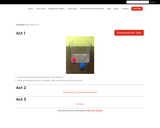
How many cubes will fit? This 3 Act Task by Graham Fletcher begins with a picture of an empty cube and one unifix cube inside it. First students make observations and estimates to begin determining how many unifix cubes would fit in the empty cube. Students can then use images with the dimensions of the cube and unifix cube to determine how many unifix cubes fit into the cube. Students are estimating, visualizing, measuring, adding and multiplying fractions and whole numbers to determine the volume of the cube.
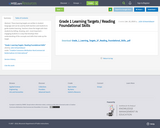
Abstract: These learning targets are written in student language and can be used by both teachers and students to guide student learning. Teachers share the target with their students by telling, showing, and—most important—engaging students in a way that develops their understanding of the concepts and skills that make up the target.
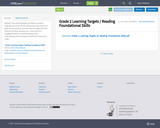
Abstract: These learning targets are written in student language and can be used by both teachers and students to guide student learning. Teachers share the target with their students by telling, showing, and—most important—engaging students in a way that develops their understanding of the concepts and skills that make up the target.

These learning targets are written in student language and can be used by both teachers and students to guide student learning. Teachers share the target with their students by telling, showing, and—most important—engaging students in a way that develops their understanding of the concepts and skills that make up the target.
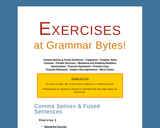
This web page offers an interactive, game style experience for students to practice various grammar and punctuation skills. Students immediately know if they did the exercise correctly and have a chance to do over if necessary.
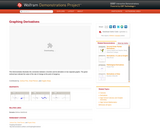
This Demonstration illustrates the connection between a function and its derivative on two separate graphs. The green vertical bars indicate the value of the rate of change at the point of tangency.
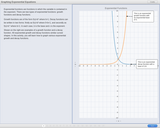
Students graph exponential growth and decay functions by connecting ordered pairs. This is the first of three activities about Exponential Functions. The associated lesson plan and student assessment questions can be found at: https://concord.org/projects/smartgraphs#curriculum and clicking on “Algebra†and then “Exponential Functions.â€Â
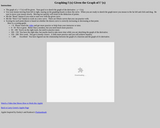
The graph of y = f '(x) will be given. Your goal is to sketch the graph of the derivative: y = f (x). Use your mouse moving from left to right, staying on the graphing board, to draw the curve. When you are ready to sketch the graph move you mouse to the far left and click and drag. Be sure to move your mouse slowly. Moving too quickly will result in the deduction of points.
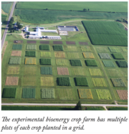
Corn is one of the best crops for producing biomass for fossil fuels, however it is an annual and needs very fertile soil. To grow corn, farmers add a lot of chemical fertilizers and pesticides to their fields. Other crops, like switchgrass, prairie, poplar trees, and Miscanthus grass are perennials and require fewer fertilizers and pesticides to grow. If perennials can produce high levels of biomass with low inputs, perhaps they could produce more biomass than corn under certain low nutrient conditions.
This resource was evaluated using the HQIM rubric - https://docs.google.com/spreadsheets/d/1XTrjQnltiJHNepi28JGFMjAeYRkHV6p4IuRNaSZ1YQQ/edit?usp=sharing
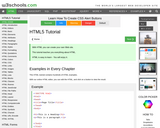
Learn HTML(5) and CSS
W3Schools is the largest web developers site on the Internet with HTML(5) and CSS web development tutorials and references covering most aspects of web programming.
Easy to Use Tutorials
W3Schools focuses on simplicity, practicing easy and straight-forward learning by using simple code explanations, and illustrations on how to use it. Tutorials start from basic level, and move all the way up to complete professional references.
Online Editor
W3schools presents thousands of code examples. The site contains an online editor allowing teachers/students to edit examples and execute computer code experimentally, to see what works and what does not, before implementing it.
W3Schools is a completely free developers resource. Permission is granted to link the site and use small snippets of code in examples.

Students will learn about the four pillars of Drug Strategies our society uses to prevent, reduce the number of addicts, and the harm they place on our society; from deaths, disease transmission, crime, cost, etc. Once students understand each pillar and how these steps help prevent addictions they will focus on the forth pillar which is "Harm Reduction". Harm Reduction is very contraversal and fairly new in our society, especially with the Heroin Epidemic we are facing in our society. Harm reduction programs and practices aim to reduce the harms associated with the use of drugs in people unable or unwilling to stop. Harm reduction programs focus on limiting the risks and harms associated with unsafe drug use (HIV transmission, viral hepatitis, and death from overdose), decrease the cost on society and petty crime. Students will form personal opinions on three different types of Harm Reduction practices around the world and they work as a group to debate their view point.
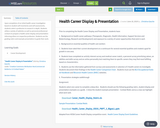
Upon completion of an initial health career investigation based on student self-inventories and self-assessments, students select a profession to research in depth. Students utilize a variety of websites as well as personal professional contacts to prepare a health career display and presentation informing others on respective profession. Students use the grading rubric and example presentation to guide their work.

Open source health lesson and resources are searchable by health education topic, arranged by grade-band, and reviewed using the Health EQuIP Tool/Resource Review Rubric.
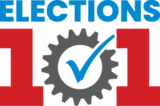
This series of classroom activities were written to support educators who use the 2022 video series "Elections 101" from the Wisconsin Elections Commission (WEC).
"Helping at the Polls" helps students answer the questions "What are ways I can civically participate in my community?" and "How do we hold elections in my community?". Teachers will use the videos "A Day at the Polls" and "Election Security" from the WEC to build a recruitment brochure, poster, or other media to encourage people to volunteer as pollworkers.
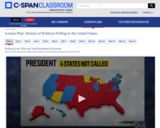
This lesson features the history of political polling in the United States going back to the 19th century and the development and use of polling since then.

Over the course of nine months, eleven Hmong language educators took an Ethnic Studies course with Dr. Jenna Cushing-Leubner & Heritage Language/Ethnic Studies teacher Natalia Benjamin at the University of Wisconsin-Whitewater, and attended the Boston Ethnic Studies training with Katie Li and her team. Afterwards Dr. Vicky Xiong-Lor of Clovis Unified and Doua Vue of Fresno Unified lead the team through self-healing activities and created a Hmong Ethnic Studies curriculum. This is the first phase of curriculum creation with more to come.
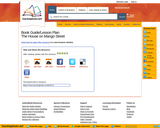
This is a great lesson to do either in the middle of the novel or as an introductory lesson. It is a great way for students to make connections to the content in the novel.
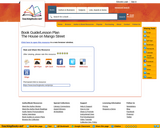
This is an excellent way to assess students' understanding of a multitude of literary and comprehension elements when reading The House on Mango Street. It provides excellent examples as to what students can do as far as activities as well.